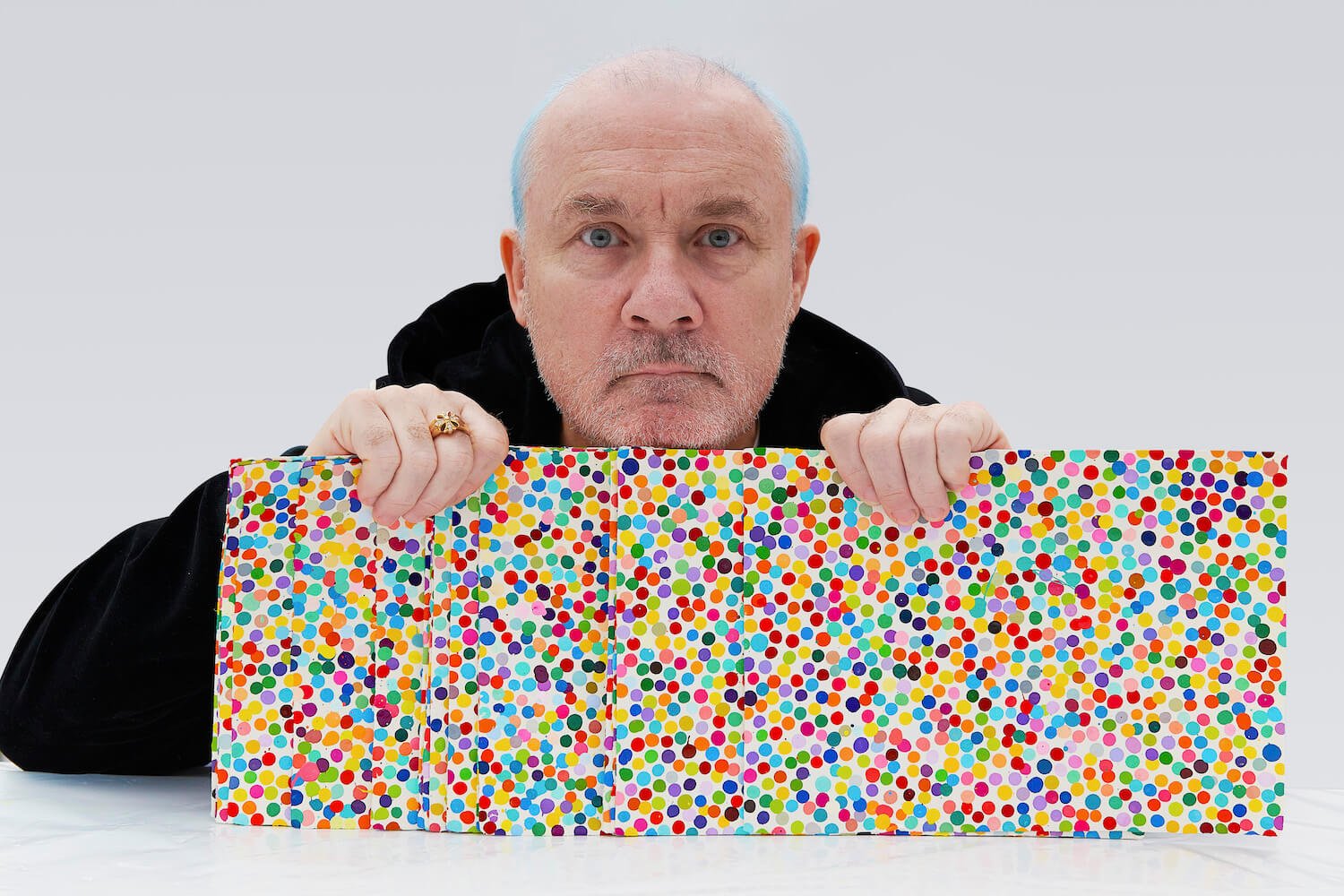
Who is Damien Hirst? Born on June 7, 1965, in Bristol, England, Damien Hirst is one of the most influential and provocative artists of our time. Known for his controversial and thought-provoking works, Hirst has consistently pushed the boundaries of contemporary art. From his iconic shark suspended in formaldehyde to his diamond-studded skull, Hirst's creations often explore themes of life, death, and the human condition. His early career was significantly boosted by Charles Saatchi, a British advertising magnate and art collector. Hirst's work has not only sparked debate but also fetched astronomical prices, making him the richest living artist in the UK.
Key Takeaways:
- Damien Hirst's early life and education in art shaped his unique perspective and bold approach, leading to his rise to fame and iconic works that challenge conventional norms.
- Hirst's controversial and thought-provoking art continues to impact the art world, inspiring creativity and sparking debate while leaving a lasting legacy.
Early Life and Education
Damien Hirst's journey into the art world began with a colorful and challenging childhood. His early experiences shaped his unique perspective and bold approach to art.
-
Early Life and Education: Born on June 7, 1965, in Bristol, England, Hirst spent much of his childhood in Leeds. His parents separated when he was 12, and he was raised by his mother. He showed promise in art from an early age and eventually decided to study at Goldsmiths College in London.
-
Artistic Influences: Hirst's early interests in punk music and the social scene influenced his artistic approach. He was a fan of the Sex Pistols and often referenced them in his later work.
-
Goldsmiths College: During his time at Goldsmiths, Hirst curated an influential student show called Freeze, which showcased the work of a group of his classmates who later became known as the Young British Artists (YBAs).
Rise to Fame
Hirst's rise to fame was marked by his association with the YBAs and his relationship with Charles Saatchi, which propelled him into the spotlight.
-
The YBAs: Freeze was a pivotal moment in the emergence of the YBAs, a group of artists who combined an interest in shock and spectacle with entrepreneurial skills and oppositional attitudes.
-
Charles Saatchi: Charles Saatchi, a British advertising magnate and art collector, discovered Hirst's work at Freeze and began to support him. This relationship was instrumental in Hirst's early success.
-
The Physical Impossibility of Death in the Mind of Someone Living: In 1991, Hirst created one of his most iconic pieces, a 14-foot tiger shark suspended in formaldehyde. This work not only shocked audiences but also cemented Hirst's reputation as a provocative artist.
Major Achievements
Hirst's career is filled with significant achievements that have left a lasting impact on the art world.
-
Turner Prize: In 1995, Hirst won the Turner Prize for his piece "Mother and Child Divided," which featured a bisected cow and calf preserved in formaldehyde. This win solidified his place in art history and further established him as a leading figure in the YBAs.
-
Themes in Art: Hirst's work often explores themes of life, death, science, and religion. His use of dead animals in formaldehyde is a reflection on mortality and the human unwillingness to confront it.
-
Artistic Strategy: Hirst devised a strategy to grab the attention of both the public and critics. His use of rotting corpses and other provocative elements kept him at the center of the art world and augmented the value of his work.
Iconic Works
Hirst's portfolio includes several iconic works that have become synonymous with his name.
-
Spot Paintings: Hirst's Spot paintings, which feature multicolored spots on a white background, were named after controlled substances and raised questions about art and drugs. These works were painted by hand in glossy house paint and were meant to be machine-like while allowing for human imperfections.
-
Controversy and Criticism: Hirst's work has been both celebrated and criticized. Critics have often been appalled by the high prices paid for his pieces, which they see as a form of ultra-commodification.
-
Net Worth: As of 2020, Hirst was estimated to be the richest living artist in the UK, with a net worth of $384 million.
Collaborations and Ventures
Beyond traditional art, Hirst has ventured into various collaborations and projects, showcasing his versatility.
-
Artistic Collaborations: Hirst has collaborated with various artists and designers. He has also written books and designed restaurants, showcasing his versatility beyond traditional art forms.
-
Film and Music Projects: Hirst has experimented with film and collaborated on pop music projects, further expanding his creative horizons.
-
Treasures from the Wreck of the Unbelievable: In 2017, Hirst exhibited a series of large, fantastical sculptures made out of precious metals and stones covered in barnacles. This project was his most ambitious to date and took almost 10 years to execute.
Artistic Process
Hirst's approach to creating art is as unique as the pieces themselves.
-
Artistic Execution: Hirst often works with a large number of assistants who handle the practical aspects of his artworks. He is unapologetic about this approach, emphasizing that execution is secondary to the ideas behind his art.
-
Artistic Ideas: Hirst's creative process involves generating a list of titles and ideas for shows and works without titles. He believes that art comes from everywhere and is a response to one's surroundings.
-
Influence on Contemporary Art: Hirst's influence on contemporary art is significant. He has been a visionary in anticipating the needs of the contemporary art market, often arguing that his approach to art is itself a form of art.
Inspirations and Influences
Hirst draws inspiration from a wide range of sources, both historical and contemporary.
-
Historical and Contemporary Sources: Hirst's work draws from historical and contemporary sources, including Memento Mori images in European still life and the use of biological materials by artists like Robert Rauschenberg and Carolee Schneemann.
-
Ready-Made Objects: Like Marcel Duchamp, Hirst employed ready-made objects to shocking effect, questioning the very nature of art.
-
Artistic Movements: Hirst’s work references various artistic movements, including minimalism. His use of found materials and assistants links him to artists like Jeff Koons, who demystified the role of the artist’s hand.
Personal Life
Hirst's personal life has been as colorful and complex as his art.
-
Personal Life: Hirst has been known for his rebellious nature and has been involved in petty crime in the past. He has also been open about his struggles with sobriety and has spoken about how it affected his artistic approach.
-
Mortuary Placement: Hirst took a placement at a mortuary while studying at Goldsmiths, which some believe influenced his fascination with death and the macabre.
-
First Macabre Offering: Hirst’s first macabre offering in 1990 was a putrid cow’s head inside a glass case being eaten by flies and maggots. This piece was bought by Charles Saatchi and marked the beginning of their close relationship.
Relationship with Charles Saatchi
Hirst's relationship with Charles Saatchi played a crucial role in his career, though it eventually soured.
- Relationship with Charles Saatchi: Hirst and Saatchi were tight for a decade, with each helping the other boost their reputations. However, they eventually fell out, with Hirst stating that Saatchi only recognized art with his wallet.
Auction Sales and Market Impact
Hirst has made significant waves in the art market with his unconventional sales strategies.
-
Auction Sales: In 2008, Hirst made headlines by putting up a selection of his work at auction rather than selling through a gallery. This move raised an impressive $198 million, despite the financial crisis.
-
Venice Biennale: During the 2017 Venice Biennale, Hirst held a solo exhibition titled Treasures from the Wreck of the Unbelievable. The exhibition featured sculptures and objects presented as remains from a fictional 2,000-year-old shipwreck off the coast of Africa.
Public Perception and Artistic Vision
Hirst's work often sparks strong reactions, aiming to create a sense of wonder and contemplation.
-
Public Perception: Hirst’s art often sparks awe in his audience rather than gratuitously shocking and appalling. He insists that his intention is to create a sense of wonder and contemplation.
-
Artistic Vision: Hirst’s vision for art is one that challenges conventional norms and pushes the boundaries of what is considered acceptable. He believes that art should be provocative and thought-provoking.
Legacy and Continued Creativity
Hirst's impact on the art world is undeniable, and his legacy continues to grow.
-
Art Market Impact: Hirst’s approach to art has significantly impacted the art market. His willingness to challenge norms and create controversy has driven up the value of his work and influenced the way artists approach their craft.
-
Critical Reception: Despite the controversy surrounding his work, Hirst has received critical acclaim for his innovative and thought-provoking pieces. His ability to spark debate and discussion has cemented his place in art history.
-
Exhibitions and Retrospectives: Hirst’s art has been showcased in numerous solo and group exhibitions, including major retrospectives at the Museo Archeologico Nazionale in Naples and Tate Modern in London.
-
Artistic Innovations: Hirst has introduced several innovative techniques into his work, including the use of spin machines to create paintings and the incorporation of found objects into his installations.
Notable Works and Replicas
Some of Hirst's most famous works have sparked further artistic responses and discussions.
-
Diamond-Studded Skull: One of Hirst’s most expensive works is For the Love of God, a diamond-studded platinum-cast human skull. This piece was originally priced at £50 million but failed to sell initially.
-
Replica Creation: In response to For the Love of God not selling, British artist Laura Keeble created an inexpensive replica, highlighting the commercial aspect of Hirst’s work.
Artistic Legacy and Philosophy
Hirst's philosophy and approach to art continue to influence and inspire.
-
Artistic Legacy: Hirst’s legacy extends beyond his individual works. He has influenced a generation of artists and continues to shape the contemporary art scene with his provocative and innovative approach.
-
Artistic Philosophy: Hirst believes that art should be accessible and engaging for all audiences. His use of dead animals and other provocative elements aims to introduce first-time visitors to the challenges of contemporary art in an immediate and impactful way.
-
Artistic Precedents: Hirst’s work draws from various artistic precedents, including the use of biological materials by artists like Robert Rauschenberg and Carolee Schneemann. His approach to using found objects and assistants links him to artists like Jeff Koons.
-
Artistic Impact on Culture: Hirst’s work has had a significant impact on popular culture. His ability to create controversy and spark debate has made him a household name in the art world.
-
Continued Creativity: Despite his immense success, Hirst continues to be creative and innovative. His recent exhibitions and projects demonstrate his commitment to pushing the boundaries of what is considered art and challenging the norms of the art world.
Damien Hirst's Impact on Art
Damien Hirst has left an indelible mark on contemporary art. His provocative works, like the shark in formaldehyde and diamond-studded skull, challenge our perceptions of life, death, and art itself. Hirst's knack for controversy and innovation keeps him at the forefront of the art world. His influence extends beyond his pieces, shaping how artists approach their craft and engage with the market. From his early days at Goldsmiths College to his Turner Prize win, Hirst's journey is a testament to his relentless pursuit of pushing boundaries. His collaborations, exhibitions, and unique artistic strategies continue to captivate audiences and spark debate. Whether you love or loathe his work, there's no denying Hirst's significant impact on the art world. His legacy will undoubtedly inspire future generations of artists to think outside the box and challenge the status quo.
Frequently Asked Questions
Was this page helpful?
Our commitment to delivering trustworthy and engaging content is at the heart of what we do. Each fact on our site is contributed by real users like you, bringing a wealth of diverse insights and information. To ensure the highest standards of accuracy and reliability, our dedicated editors meticulously review each submission. This process guarantees that the facts we share are not only fascinating but also credible. Trust in our commitment to quality and authenticity as you explore and learn with us.


